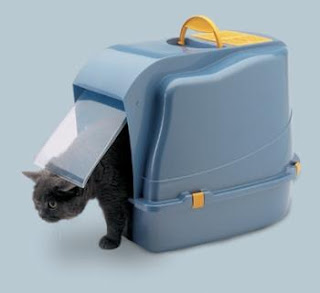9/7/10
The Right Cat Litter
September 07, 2010
Cat Health, Cats
Many categories of cat litter are on the market. Most litters are disposable; some are even flushable. Clawed cats are not chancy to care what type you utilize. Declawed cats, on the other hand, are often challenged with litter box issues.
Non clumping clay litters: Granulated pieces of clay litter are about the size of small-grain rice. 100% clay litters are natural, very inexpensive and utilizable in every grocery store, pet stores, and online catalogs. Clay litters are not biodegradable or flushable. The clay naturally contains silica dust which is a known carcinogen. Manufacturers say that the cat litter does not have any more silica dust than sandy beaches. Even so, if your cat has a fragile health or behavior difficulty, you may test biodegradable litters. Some clay litters are scented with a deodorizer that absorbs odors or is activated when the litter is pawed at or stirred.
Clumping litter: Also known as "scoopable," this type of litter forms a solid ball when urine penetrates a deep layer of the litter. This litter lasts longer and controls the smell of urine quite well. Some declawed cats may prefer the fine texture and softness of clumping litters. Because clumping litters control the odor so well, they seem ideal at beginning, precisely if you have more than one cat. But there is a important problem to some scoopable/clumping litters.
For clumping litters to work, they need a "clumping agent." A popular clumping agent in frequent scoopable brands is sodium bentonite. This clumping agent expands to 15 times its size when wet. When acat steps in the litter box, some sodium bentonite clings to his paws. This aftereffects in an impaired immune system, respiratory distress, and irritated bowel syndrome.
Non clumping clay litters at least have larger granules that tend to fall off his paws. Since manufacturers do not have to disclose ingredients on the litter's label, call them and ask if the clumping litter
contains sodium bentonite. If it does, try another brand.
Litter containing ingredients such as calcium bentonite and sodium bentonite may also ruin the plumbing in your home. Some municipalities may fine you if certain clumping litters are found in your pipes or sewer.
Biodegradable litters
Biodegradable litters come from plants. These litters are made of alfalfa, corn cob, aspen, citrus peels, pine and wheat. Most are flushable but call the manufacturer to be sure, or if you have a septic tank. New biodegradable litters are hitting the market almost every year. Some litters are finely ground, others are pellet type. Some naturally clump without sodium bentonite. Most are dust-free.
Newspaper litters
Litters recycled from newspaper come in pellet form. These are found in grocery stores, online catalogs, and pet stores. However, newspaper could be toxic to some cats or people because some inks are toxic. Some do not control odor too well.
Litter Boxes
Look for litter boxes in hardware stores, pet stores, and online catalogs. Disinfect and rinse them well before using. Have at least one box per cat. Add an additional box if they are kept indoors only or declawed. The size of the box depends on the cat and his personality.











